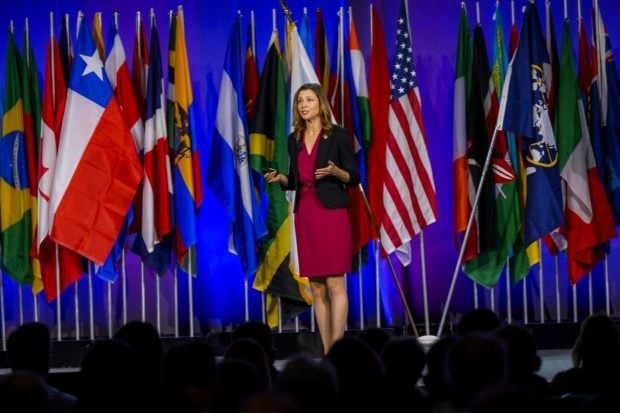When credit union cooperatives were first formed, volunteering time to guide the brotherhood's money had a strong intrinsic value. The credit unions approved your chairman's auto loan on good faith and a handshake, so he could make it to work and feed his family. Loyalty like that doesn't happen anymore.
The most effective volunteers are those who can give strategic counsel and direction while maintaining their own sustainability and competence.
How can a credit union create such a sexy board? By utilizing the following four C's of effectiveness to become a high-functioning and engaged volunteer group that together can tackle any industry or community challenge.
Recommended For You
1. Competence → Contribution. From both a strategic and regulatory standpoint, competency is critical in regard to financial literacy, risk management and strategic direction. You need to ensure the board is participating beyond the annual jeopardy BSA game. Set standards for education and measure these critical competencies.
However, the competence alone is not enough. Volunteers must get involved. At a recent planning session, a board was discussing a political advocacy initiative and divvying up jobs on how to individually participate. This interaction between the volunteers and legislators will not only help the credit union and the movement, but will also increase their feeling of contribution and impact.
2. Consistency. In an industry dominated by older board members, I may be among the minority in believing board demographic diversity is only as important as creating a volunteer team consistent with the credit union's field of membership and targeted future membership. If you serve older, working and retired county employees, then having that board makes sense. If you are running a community-based credit union that serves the Hispanic market and targets young college kids, and your board is composed of entirely retired, SEG-based members of the military (and the base has been closed for 20 years), then (shaking my head) it is time to switch things up.
 3. Connection. Successful volunteer teams have chemistry and open communication that is built on mutual trust and respect. They share information, connect on a personal level and challenge one another's conclusions when appropriate. Even (especially) if they've been together for 20 years, spend time nurturing the board's relationships.
3. Connection. Successful volunteer teams have chemistry and open communication that is built on mutual trust and respect. They share information, connect on a personal level and challenge one another's conclusions when appropriate. Even (especially) if they've been together for 20 years, spend time nurturing the board's relationships.
Effective boards and committees typically have a strong connection with the CEO as well. One of the greatest struggles we see as emerging executives advance to the CEO role is the management of the board. Establishing routines, expectations and standards of this connection can facilitate success.
Another important consideration is the future of meetings and how your board will connect with one another. This goes beyond teaching volunteers how to use their iPads. Effective volunteers create opportunities for participation in alternative or virtual ways. At a recent planning session, members of a board asked me the theoretical question: Would I prefer to attend a board meeting at 11 a.m. or 6 p.m.? I replied, neither. I work at 11 a.m. I have kids to love at 6 p.m. So if you want my profile or demographic involved, there needs to be flexibility.
4. Commitment. The best way to motivate and enforce commitment and accountability is through peer pressure. Establish informal roles beyond the traditional secretary or vice chair, such as advocacy, emeritus or events. Directors who take their duties seriously will require their fellow members to do the same. Conduct anonymous peer evaluations of the board to create an objective rating that is reviewed openly. This becomes a measurable benchmark for performance.
Developing directors who go beyond the basics of competency, challenge each other to contribute, connect to one another virtually and personally, and continue to learn will lead to the creation of high-performing, sexy boards of the future.
 Brandi Stankovic is senior partner for Mitchell, Stankovic and Associates. She can be reached at 855-362-2002 or [email protected].
Brandi Stankovic is senior partner for Mitchell, Stankovic and Associates. She can be reached at 855-362-2002 or [email protected].
© 2025 ALM Global, LLC, All Rights Reserved. Request academic re-use from www.copyright.com. All other uses, submit a request to [email protected]. For more information visit Asset & Logo Licensing.







